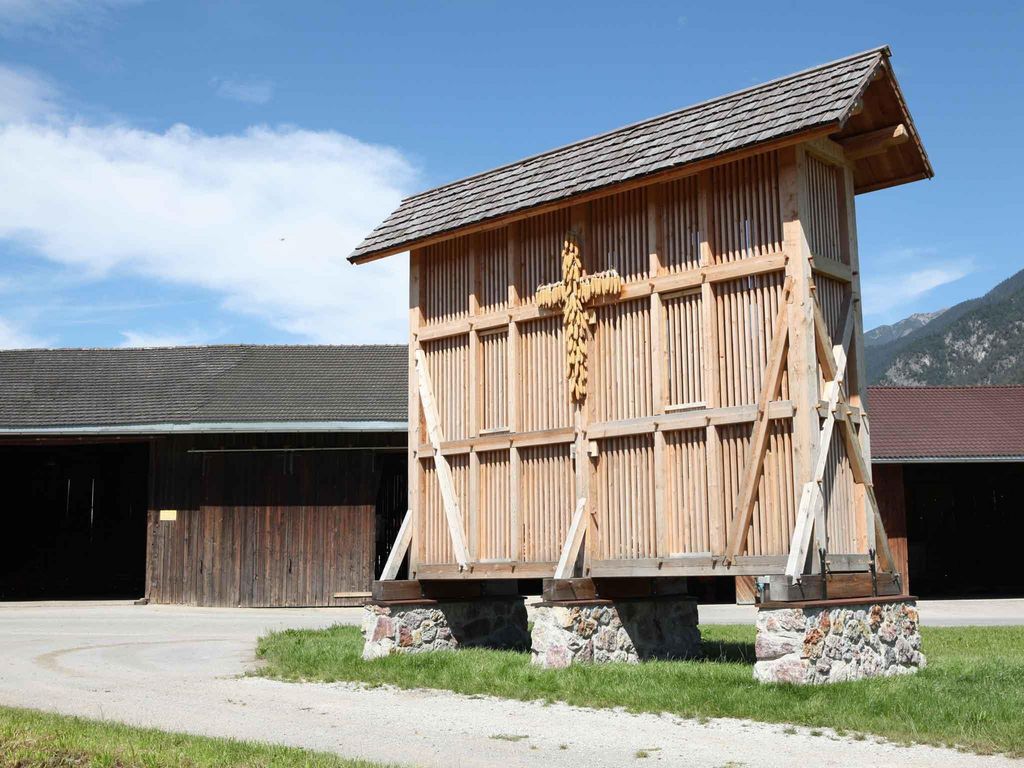Tirggenhäusl
Birkenweg, 6175 Kematen
+43 5232 / 23 00
verwaltung@kematen.tirol.gv.at
https://kematenintirol.at
Opening Hours
“Tirggen” is the Tyrolean word for maize. Maize was cultivated in the town of Kematen from around 1600 onwards, with some farmers harvesting up to 20,000 kilograms. Josef Hörtnagl even created the town’s very own variety, the “Kemater Tirggen”. The maize was dried on “Tirggengehänge”, which were wooden bars mounted up in the gables of the houses.
From approximately 1860 onwards, the maize was stored in “Tirggenhäusl” storage huts. The farmers of Kematen found out about this form of storage from the bailiff Lepuschitz, a co-proprietor of the “Burghof” farm who came from Hungary. From then on, the Tirggenhäusl characterised the appearance of Kematen. This storage method saved space and therefore made it possible for the cobs to be dried in large quantities. Tirggenhäusl structures can still be found today in the Burgenland state of Austria and in Hungary.
Over time, most of the Tirggenhäusl were replaced by storage in silos and by the end of the 1970s, all of the Tirggenhäusl in Kematen had completely disappeared. Today, however, the town is home to one “Tirggenhäusl”, which is located on the original site next to the machinery hall for the Agrargemeinschaft Archberg-Winkelberg agricultural association. This replica perfectly preserves the landmark of Kematen.



